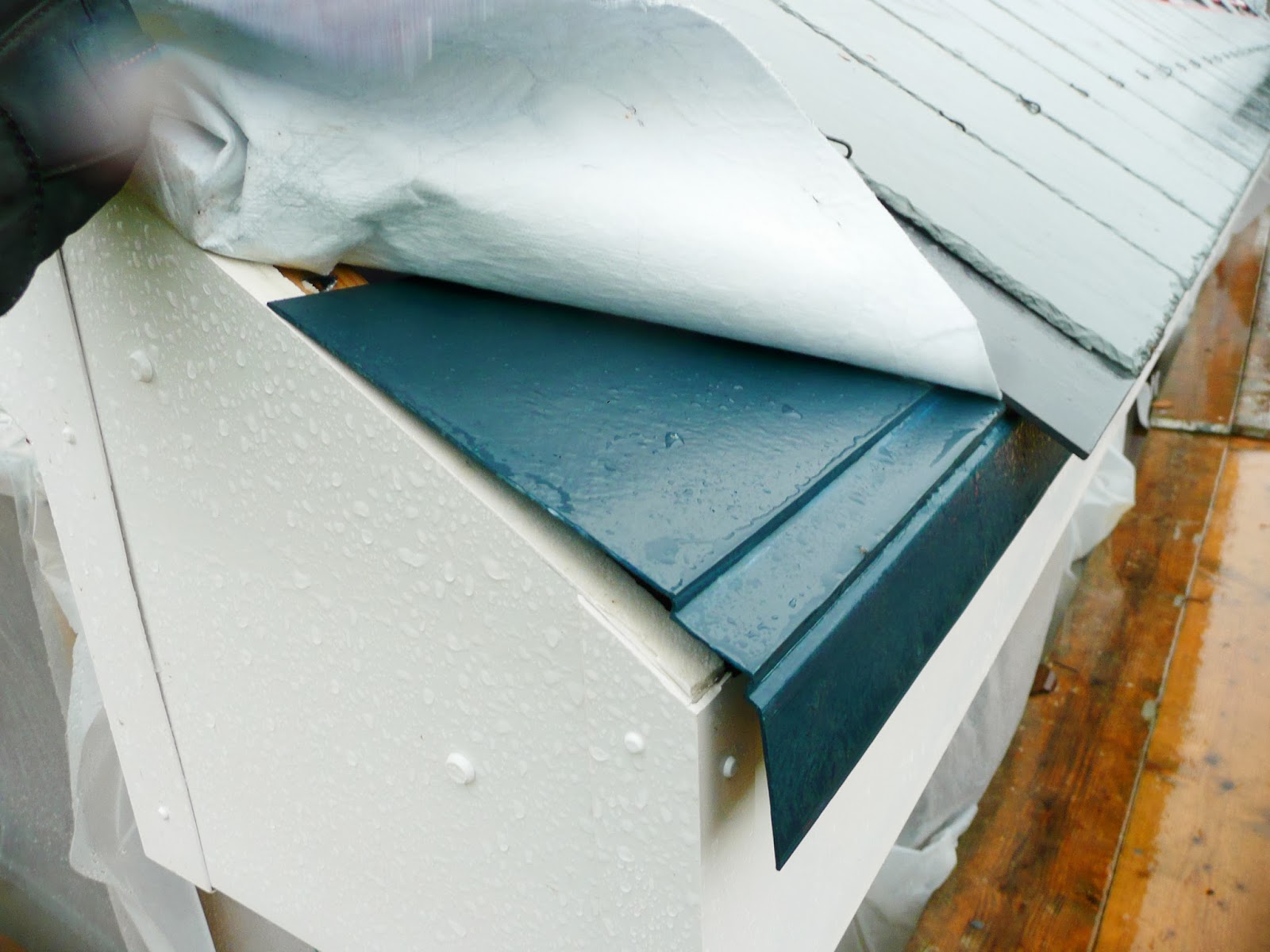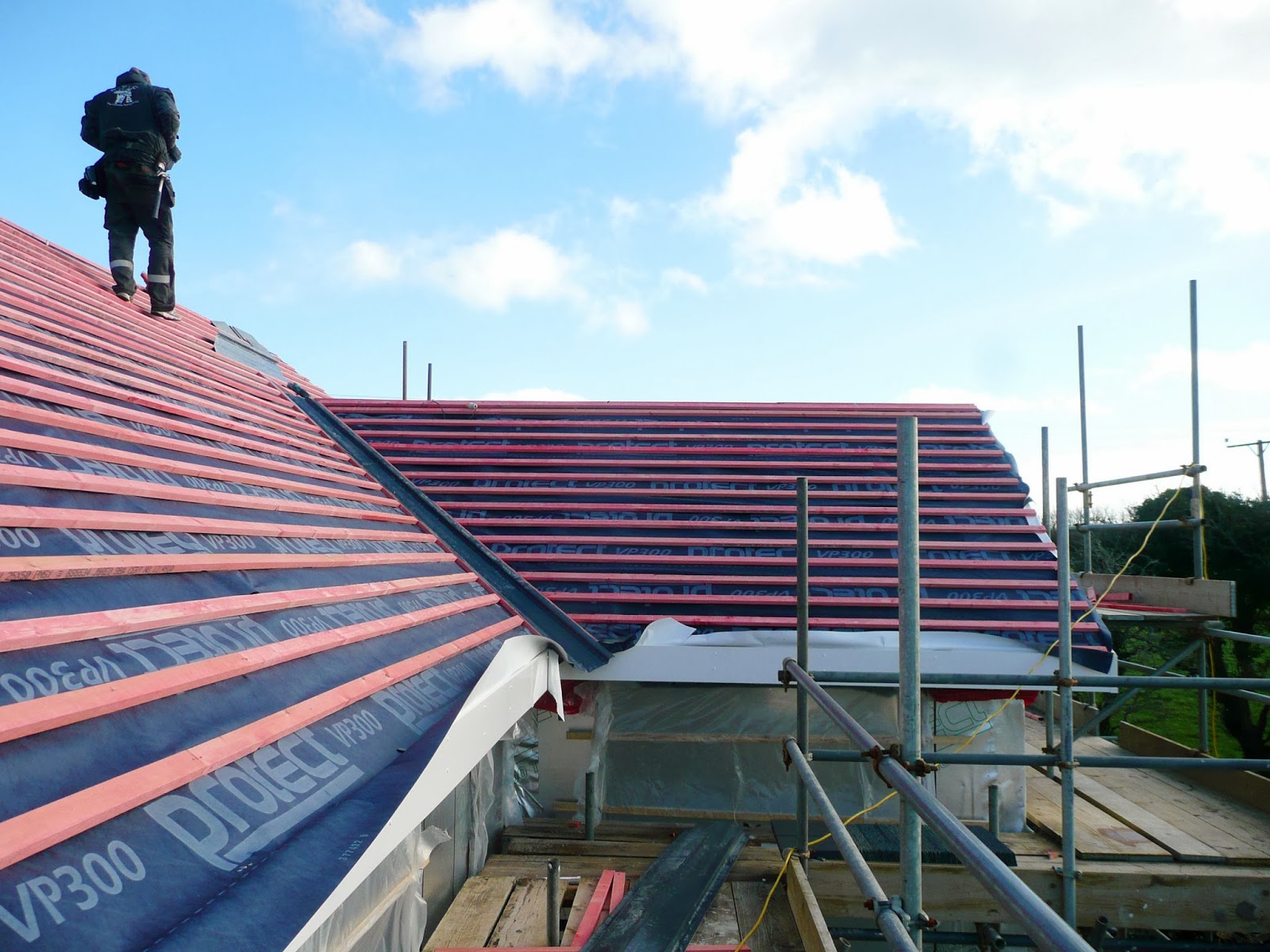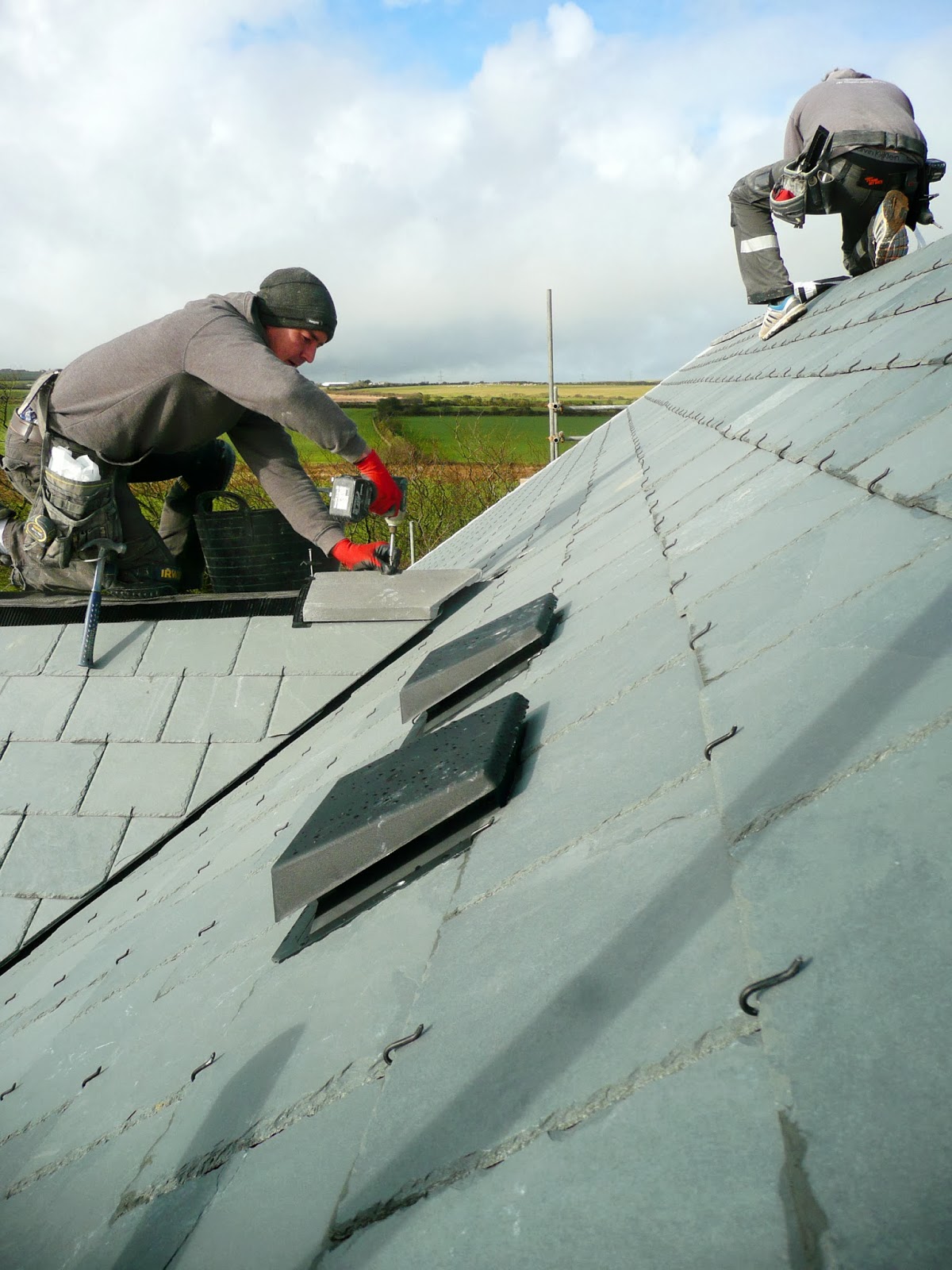
The eaves protection system (the green plastic thingy) was fitted along the whole length of the fascia. It helps direct water into the gutter, preventing it from pooling at the bottom edge of the membrane.



Despite the constant rain Matt was able to progress quickly as he was using hooks rather than nails to attach the slates. Hooking the slates is better for windy, coastal areas like ours because it holds the front face tight to the roof which prevents wind getting underneath and blowing them off. An added bonus of using hooks is that slates can easily be replaced in the case of any damage.



End of the first day of slating and three-quarters of the north side was done.
The Brazilian grey-green slate was an easy choice as it was the contemporary light colour that we wanted (and luckily it happened to be the cheapest too).
Considering the famous Delabole slate quarries are only a few miles away from us, it seems absurd to use Brazilian slate flown across from the other side of the world. Unfortunately the Delabole slate costs around eight times more than the Brazilian, plus the waiting list for delivery is apparently several years.

The following morning the roofers started early to make the most of a calm, bright day.




Matt started work on the valleys that run diagonally down to the gutters at the line where the two roofs meet.

We opted to use modern fibreglass valleys rather than the more traditional lead versions. Lead is more expensive, has been known to be stolen for its high scrap value and we don't think it makes any difference to the roof's overall appearance.


A string line was attached to the verge in order to neatly line up the slate overhang. The corners of each slate were shaped with an angle grinder to direct water towards the gutter and keep it from running over the verges. Aside from its practical purpose it gave the roof edge a nice decorative appearance.

The north side of the house completed.
The roofers complimented Dan's handiwork on the roof structure, saying his accuracy in fitting the roof trusses and rafters made their job much easier and enabled them to create a very neat, level roof.

After a few days lost to more bad weather, Matt began work on the south side of the roof.

The site foreman's enthusiasm for all the hard work on the roof knew no bounds...

The east side gradually taking shape.



Cutting the slates for the valley edges took Matt some time but the results were very impressive.

The finished valley with slates neatly cut on either side.

After several weeks trying to build the roof in torrential rain, gales, snow and hail, the sun typically decided it was time to shine just as the roof was being completed.

The last job for the roofers was to fit the ridge tiles onto the top of the roof.


Traditionally ridge tiles are fixed to the roof using cement mortar, however we used a modern dry ridge system. In exposed coastal locations like ours, mortar tends to crack and crumble over time, so it made more sense to use a low maintenance system instead. The dry ridge tiles are also ventilated to allow air to flow under the slates from the fascia vents (as shown in the previous chapter).

Health and safety officers look away now. The roofers balanced precariously whilst sticking down the ventilated gasket that runs underneath the ridge tiles.

The ridge tiles were screwed down onto the gasket to make a watertight yet ventilated seal.
The vents in the foreground are joined to ducts in the loft. One will be connected to a breather pipe for the soil stack (toilet pipe) and the other will be connected to an extractor fan in the loft to remove moist air from the kitchen and bathrooms.




The roof is completed. Hoorah!



2 comments :
Fantastic job on the roof! :D xx
Great post!! great help for me with step by step photos!!
Post a Comment